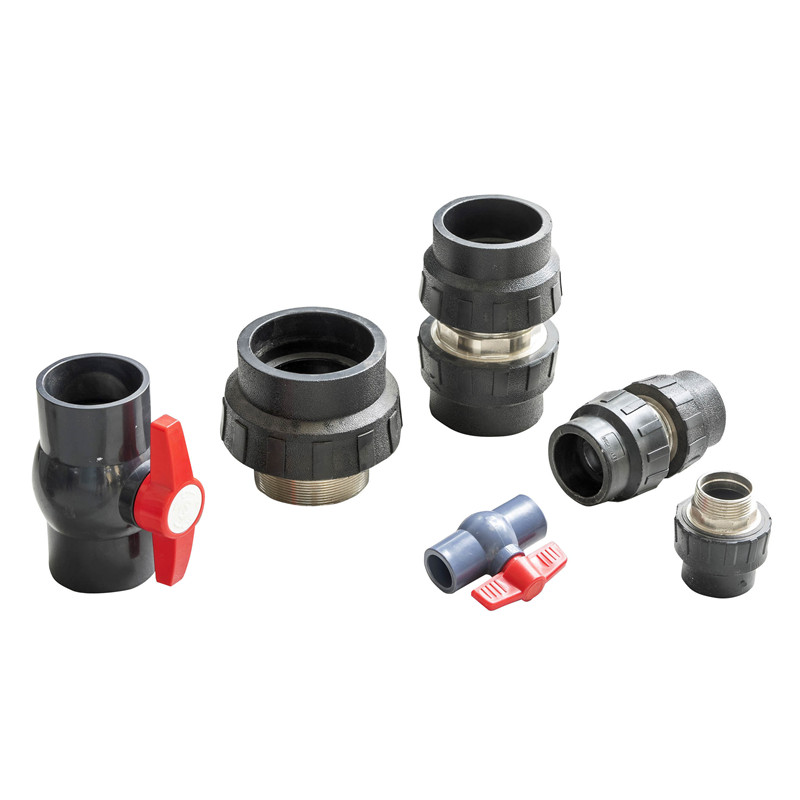Nov . 27, 2024 18:07 Back to list
Durable Plastic Fittings for Efficient Irrigation Pipe Systems and Water Management Solutions
Understanding Plastic Irrigation Pipe Fittings A Comprehensive Guide
Irrigation is an essential practice in modern agriculture, enabling water management in areas that may otherwise receive insufficient rainfall. Among the myriad tools used for irrigation, plastic pipe fittings play a critical role in ensuring the efficient transport of water. This article explores the various types, benefits, applications, and installation techniques associated with plastic irrigation pipe fittings.
Types of Plastic Irrigation Pipe Fittings
When it comes to plastic irrigation pipe fittings, a variety of types cater to different needs and irrigation methods. The most common types include
1. Elbows Used to change the direction of the pipe, usually available in 90-degree and 45-degree angles. These fittings help navigate the layout of an irrigation system around obstacles.
2. Tees As the name suggests, these fittings allow for branching off the main pipe line, enabling water to be diverted to additional areas.
3. Reducers Used to connect pipes of varying diameters, reducers are essential for scaling down to a smaller pipe size to maintain flow and pressure.
4. Couplings These fittings join two sections of pipe together, providing a secure connection for longer runs of irrigation tubing.
5. Adapters Used to connect pipes of different threading or sizes, adapters ensure compatibility between various components of an irrigation system.
6. Caps and Plugs These fittings seal the end of a pipe to prevent leaks and ensure that the system retains pressure where needed.
Benefits of Using Plastic Pipe Fittings
Plastic pipe fittings have gained popularity in irrigation systems due to their numerous benefits
- Corrosion Resistance Unlike metal fittings, plastic fittings do not corrode, ensuring longevity and reducing maintenance costs.
- Lightweight and Ease of Handling The lightweight nature of plastic makes handling and installation easier, especially in large-scale irrigation projects
.- Cost-Effectiveness Generally, plastic fittings are more affordable than their metal counterparts, resulting in lower initial investment and maintenance costs.
plastic irrigation pipe fittings

- Flexibility in Design Plastic fittings can be molded into various shapes and sizes, allowing for versatile designs and configurations based on the specific needs of the irrigation layout.
- Reduced Friction Loss Smooth inner surfaces of plastic fittings minimize friction loss, thus maximizing water flow efficiency.
Applications in Agriculture
Plastic irrigation pipe fittings are widely used across various agricultural sectors. From small-scale home gardens to large commercial farms, these fittings find applications in
- Drip Irrigation Systems Used extensively in horticulture and agriculture, drip systems utilize plastic fittings to direct water precisely to plant roots, enhancing water conservation.
- Sprinkler Systems In crop fields, plastic fittings enable the connectivity required for overhead sprinkler systems, ensuring even distribution of water.
- Surface Irrigation In furrow or flood irrigation techniques, these fittings play a role in controlling the flow and direction of water along rows of crops.
Installation Techniques
Proper installation of plastic irrigation pipe fittings is crucial for optimal performance
- Cutting and Preparing Pipes Ensure that the ends of the pipes are clean and free from debris before attaching the fittings. A proper cut at a 90-degree angle provides the best fit.
- Securing Connections Many plastic fittings have threaded ends or use barbed connectors that require additional clamps to secure the connection. Make sure to follow manufacturer instructions for the best results.
- Pressure Testing Once installed, it’s essential to conduct a pressure test to ensure there are no leaks, as leaks can result in water loss and increased costs.
- Regular Maintenance Although plastic fittings are durable, regular inspections can identify potential problems before they lead to significant system failures.
Conclusion
Plastic irrigation pipe fittings are indispensable components of modern irrigation solutions. With their inherent durability, affordability, and adaptability, they offer farmers and gardeners an efficient way to manage water resource effectively. Understanding the different types, benefits, and installation techniques will empower users to optimize their irrigation systems for sustainable agricultural practices. By leveraging the advantages of plastic fittings, one can contribute to not just increased productivity, but also environmental stewardship in water management.
-
High-Quality PPR Pipes and Fittings Durable ERA PPR & PVC PPR Solutions
NewsJul.08,2025
-
Black HDPE Cutting Board - Durable, Non-Porous & Food Safe HDPE Plastic Cutting Board
NewsJul.08,2025
-
High-Quality CPVC Panel Durable HDPE & PVC Panels Supplier
NewsJul.08,2025
-
Double PE Welding Rod Supplier - High Strength, Durable & Versatile Welding Solutions
NewsJul.07,2025
-
High-Quality PVC-O Pipe Supplier Durable 75mm PVC Pipe & Connections Leading PVC Pipe Company
NewsJul.07,2025
-
HDPE Drainage Pipe Supplier – Durable & Corrosion-Resistant Solutions
NewsJul.06,2025

